What Is Vulnerability Management? A 2024 Guide to Protecting Organization’s IT Infrastructure

Have you ever wondered how businesses keep their digital systems safe from cyber threats? Vulnerability management is the answer.
Vulnerability management is a crucial process in cybersecurity. It's about regularly identifying, assessing, reporting, managing, and fixing vulnerabilities in computers, servers, hardware, and software.
Specialized tools scan organization’s network to pinpoint any openings that hackers could exploit. When they find something, such as outdated software, they are promptly patched. This process is an ongoing process.
Why does vulnerability management matter so much? By managing vulnerabilities effectively, businesses can shield themselves and their customers from cyber-attacks. But it's not just about using advanced tools. Effective vulnerability management means you have to understand the specific threats your business faces. You've got to make smart decisions about where to put your effort. It involves staying updated with new technologies and threats, ensuring preparedness for emerging risks.
We at Easy2Patch, have compiled this guide on vulnerability management to assist businesses in effectively protecting against cyber threats. After reading this guide, your organization will be better equipped to enhance its cybersecurity defenses and resilience against potential threats.
What are the steps of the vulnerability management process?
Let's break down the vulnerability management lifecycle:
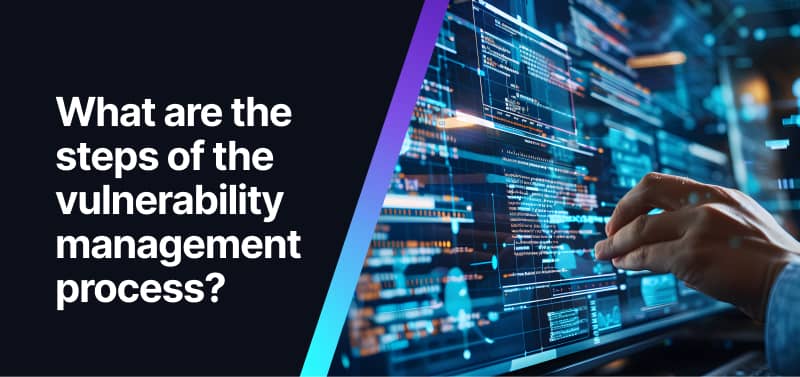
1- Detection: Where are the vulnerabilities?
Vulnerability Scanning:
Automated tools are employed to scan networks, systems, and applications for vulnerabilities. These tools utilize databases such as the Common Vulnerabilities and Exposures (CVE) list to identify known issues.
Manual Assessment:
Automated tools are great, but they can miss some items. That's why it's essential to do manual checks too. Automated tools catch any weaknesses that might be overlooked in manual assessment.
2- Ranking and Prioritization: Which one poses a bigger threat than the others?
CVSS Scoring:
This is where you give each vulnerability a score using the Common Vulnerability Scoring System. It is a standardized way to measure how serious a vulnerability is.
Risk Assessment:
Here, you rank vulnerabilities by severity, ease of exploitation, and potential impact. Consider the importance of affected systems and how easily vulnerabilities can be exploited. You can refer to frameworks like NIST or ISO 27001 for guidelines on assessing and managing these risks.
3- Remediation: How to address and resolve security vulnerabilities?
Patch Management:
Patch management is about applying security patches quickly to fix vulnerabilities. Basically, you need to update your systems with the latest patches from software vendors. Easy2Patch makes this easier by streamlining the process of updating your organization’s systems with the latest patches from software vendors.
Configuration Changes:
This is where you adjust system settings and configurations to reduce risks. It could mean changing security settings, network configurations, or access controls.
Third-Party Software Updates:
Don't forget to keep the third-party software updated too. This ensures all parts of the organization’s IT environment stay secure. Easy2Patch simplifies keeping third-party software up to date, ensuring all components of the IT environment remain secure.
4- Validation: Did the fixes work?
Verify Remediation Efforts:
Now, you need to ensure that remediation efforts were successful. This involves checking that vulnerabilities have been effectively addressed.
Retest Systems:
Then you retest systems to confirm that vulnerabilities are closed. Retesting ensures that the fixes worked and did not introduce new issues.
5- Monitoring and Continuous Assessment: What is the solution for new threats?
Regular Monitoring:
Monitoring means keeping an eye out for any new vulnerabilities that might pop up. It's all about staying proactive by scanning and assessing the systems regularly. You want to catch those issues before they turn into real problems.
Adaptation:
Adaptation is about being flexible and ready to tackle new threats as they emerge. You update the strategies and tools to stay one step ahead of the threats. This way, your organization stays protected against the latest vulnerabilities that could potentially affect the organization’s systems.
6- Reporting and Communication: Are the stakeholders aware of the status of vulnerabilities?
Share Vulnerability Status:
You should keep everyone in the loop about what vulnerabilities are lurking around. Regular updates are key here, letting stakeholders know where things stand and what needs their attention.
Highlight Progress:
Emphasize the progress made in fixing vulnerabilities while identifying areas that require further focus. It promotes transparency and accountability throughout the network vulnerability management process.
We've also laid out this checklist to give you a straightforward roadmap for managing vulnerabilities effectively.
| Steps | Description |
|---|---|
| Detection | We start by using automated tools like Easy2Patch to scan our networks, systems, and applications for vulnerabilities. We complement this with manual checks to catch anything the tools might miss. |
| Ranking and Prioritization | Next, we prioritize which vulnerabilities to tackle first. We assign scores using the Common Vulnerability Scoring System (CVSS) and conduct risk assessments to understand which vulnerabilities pose the greatest threats. |
| Remediation | Once prioritized, we swiftly apply security patches from software vendors and make necessary configuration changes to reduce risks. It’s crucial to keep all software, including third-party applications, updated for comprehensive security. |
| Validation | After making fixes, we verify our efforts by ensuring vulnerabilities have been effectively addressed. We then retest systems to confirm that our fixes didn't unintentionally introduce new issues. |
| Monitoring and Continuous Assessment | We stay proactive by regularly monitoring our systems for new vulnerabilities. This allows us to adapt quickly, updating our strategies and tools as new threats emerge. |
| Reporting and Communication | Throughout the process, we maintain transparency and accountability by sharing regular updates on vulnerability statuses and highlighting progress made in strengthening our defenses. |
What Are the Key Components of Vulnerability Management?
Threat and vulnerability management uses various tools and solutions to tackle cyberthreats. A solid vulnerability management program usually includes these key components:
- IT infrastructure and Asset Inventory: This involves keeping a detailed list of all hardware, software, applications, and devices connected to the organization’s network. Why? Because knowing what you have helps spot vulnerabilities and assess the risk each asset poses.
- Vulnerability Scanning: This process uses automated tools to scan the IT infrastructure for known weaknesses. These tools regularly check for vulnerabilities, ensuring you have up-to-date information on the system's security status.
- Vulnerability Assessment and Prioritization: Here, you analyze the results from the scans. The team looks at which vulnerabilities pose the biggest risk, considering factors like the potential impact on the organization, how likely they are to be exploited, and how difficult they are to exploit.
- Risk Management: Once you've identified and prioritized the vulnerabilities, you need to develop a plan to mitigate these risks. This plan should include steps to monitor and review its effectiveness over time.
- Remediation: Next is fixing or patching the identified vulnerabilities. It can be done using automated tools or manually. After the vulnerability remediation process, you need to verify that the vulnerability has been fixed.
- Vulnerability Scanners: These tools test the systems and networks for common weaknesses, like default passwords or unpatched software.
- Patch Management Tools: These tools help keep the organization’s systems updated with the latest security patches. Easy2Patch is a great example; it automates the update process, making it easier to maintain security across all the devices.
- Security Incident and Event Management (SIEM): These systems consolidate all the security information in real time. They provide visibility into everything happening across your IT infrastructure, like monitoring network traffic and tracking user activity.
- Threat intelligence: These tools track, monitor, and analyze potential threats. They collect data from various sources to help you identify trends that could indicate a future attack.
- Remediation tracking: It helps you prioritize vulnerabilities, generate remediation tickets, and ensure that vulnerabilities are properly addressed.
Best Practices for Effective Vulnerability Management
Integrating best practices from Easy2Patch experts into vulnerability management strategy strengthens your business’s defense system. How do you do that? Let's break it down:
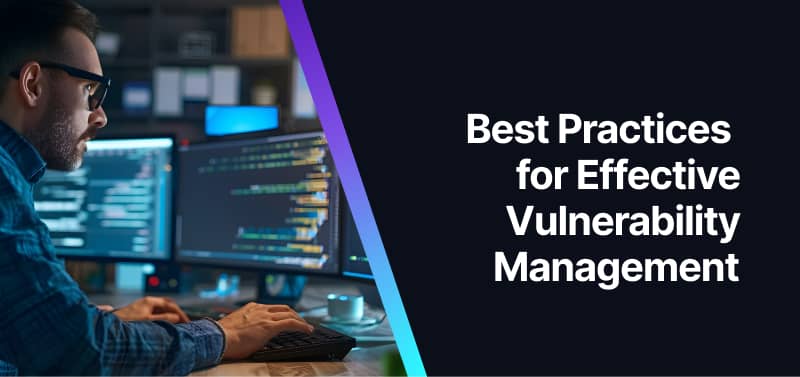
- Automated Scanning: Use automated tools for routine scans. This detects potential threats before attackers can exploit them. How does this help? It saves time and gives a comprehensive view of the system's security.
- Timely Patching: Apply security patches and updates quickly. Why is this crucial? These patches address known vulnerabilities. Tools like Easy2Patch streamline this process, ensuring efficient updates and reducing attack opportunities. You can also use Windows Server Update Services (WSUS) and Microsoft Intune to automate patch deployment.
- Penetration Testing: Conduct penetration tests to simulate real-world attacks. What’s the benefit? This identifies system weaknesses not seen in routine scans, helping you prioritize remediation efforts.
- Access Controls: Implement access controls to prevent unauthorized system access. Why is this necessary? Limiting access points and enforcing strong passwords reduce the risk of unauthorized access and data breaches.
- Employee Education: Educate your organization’s employees on cybersecurity best practices. Do they know the best practices? Employees are the first line of defense against cyber threats. Regular training sessions and phishing tests keep them updated on the latest threats.
- Structured Program: Enforce a programmatic process prioritizing high-risk vulnerabilities over low-risk ones. How does this help? It ensures consistent and effective vulnerability management.
- Customization to Risks: Tailor vulnerability management to your organization’s specific risk profile. Not all vulnerabilities pose the same threat. What should you focus on? Focus on what matters most to your organization.
- Using Frameworks and Systems: Leverage established frameworks and tools. How does this help? It streamlines vulnerability identification, assessment, and remediation. Frameworks provide structure, and tools automate and enhance your efforts.
- Third-Party Risks: Assess vulnerabilities from direct suppliers and third parties. Why is this important? Third-party risks can negatively affect your organization’s security. Evaluating and managing third-party risks is essential.
- Investing in Tools and Teams: Allocate resources to effective vulnerability management tools and skilled security teams. Why invest in this? The right tools and talent are crucial for maintaining a strong security posture and effectively managing vulnerabilities.
Challenges and Solutions of Vulnerability Management
Modern enterprises are more vulnerable than ever. Ransomware attacks, phishing scams, and slow patching all contribute to this vulnerability. However, many organizations have outdated views of VM, leading to recurring challenges. We will explore the main challenges and their potential solution here:
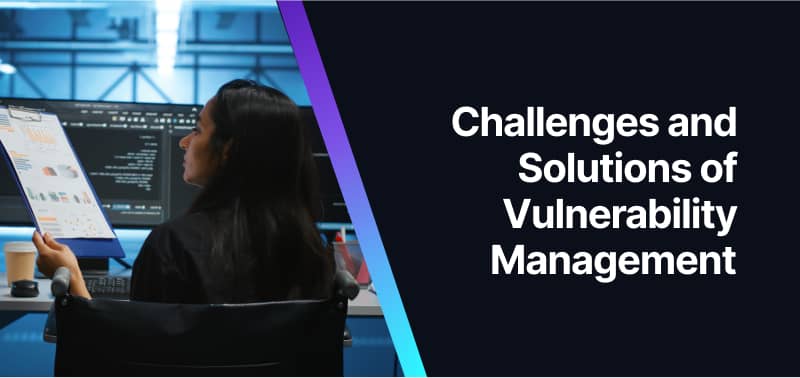
1- Dealing with Complexity
The vulnerability management process is complex. We have on-premises, cloud-based, and hybrid environments. How do we manage vulnerabilities across these diverse assets and configurations?
Solution:
- Asset Inventory: Do you keep an up-to-date asset inventory? It's essential to track all devices and software components.
- Automated Scanning: Are you using automated vulnerability scanners? They help identify vulnerabilities across your entire infrastructure.
- Risk Prioritization: How do you prioritize vulnerabilities? Focus on their criticality and potential impact.
2- Resource Constraints
Many organizations face limited resources. How do you address vulnerabilities effectively with constraints on time, budget, and personnel?
Solution:
- Risk-Based Approach: Do you focus on high-risk vulnerabilities? These pose the greatest threat.
- Patch Management: Are you prioritizing patching for critical vulnerabilities? Automated tools can help with efficient patch deployment.
- Security Awareness: How do you educate your staff about vulnerability management? Awareness is key.
3- Lack of Visibility
Without proper visibility, identifying all vulnerabilities is challenging. How do you ensure you can see all vulnerabilities across the network?
Solution:
- Continuous Monitoring: Are you implementing continuous vulnerability scanning? It helps detect new vulnerabilities promptly.
- Network Segmentation: Do you segment the organization’s network? This can limit the spread of vulnerabilities.
- Centralized Reporting: Are you using a centralized dashboard? It provides real-time visibility into vulnerabilities.
4- Patch Management
Keeping systems up-to-date with patches can be challenging. Does your organization face issues with compatibility, testing requirements, and downtime concerns?
Solution:
- Automated Patching: Are you using Easy2Patch automated tools for patch deployment? Easy2Patch helps deploy patches efficiently.
- Test Staging Environment: Do you test patches in a staging environment first? This test ensures they won't cause issues in production systems.
5- Third-Party Software
Managing vulnerabilities in third-party software is often overlooked. How do you handle vulnerabilities in plugins and libraries?
Solution:
- Inventory and Monitoring: Does your organization maintain an inventory of third-party components? Monitoring their security advisories is crucial.
- Vendor Communication: Is your organization staying informed about security updates from third-party vendors? Timely security updates help your organization react quickly to new vulnerabilities.
6- Incident Response
Responding effectively to vulnerabilities requires a well-defined incident response plan. How prepared is your organization to handle such incidents?
Solution:
- Escalation Procedures: Have you defined roles and responsibilities for handling vulnerabilities? Clear procedures are vital.
- Communication Channels: Does your organization have clear communication channels during incidents? Communication channels ensure everyone is informed and can act quickly.
Conclusion
Vulnerability management is about regularly finding, assessing, reporting, and fixing vulnerabilities in the network, systems, software and hardware. Tools like Easy2Patch scan for these weaknesses and patch them up quickly. This isn't a one-time job; it's ongoing.
The process starts with detection using automated tools and manual checks. Next, prioritize vulnerabilities using CVSS scoring and risk assessment. Then, fix them through patch management and configuration changes. Validate the fixes to ensure they work, and keep monitoring for new threats. Regular updates keep stakeholders in the loop. However, there are challenges. Managing vulnerabilities across diverse environments, limited resources, and lack of visibility are common issues.
Easy2Patch streamlines vulnerability management with automated patch deployment for over 400 software applications. Each update provides detailed information on CVEs (specific vulnerabilities fixed), enhancing transparency for easier tracking and management of security issues. Easy2Patch integrates smoothly with systems like WSUS, ConfigMgr, and Intune, making it a great option for efficient third-party patch management.
Frequently Asked Questions
Vulnerability management is important because it helps keep the organization’s systems safe from cyberattacks and data breaches. By finding and fixing weaknesses early on, you can protect the organization’s sensitive information.
1- Detection
- Vulnerability Scanning
- Manual Assessment
2- Ranking and Prioritization
- CVSS Scoring
- Risk Assessment
3- Remediation
- Patch Management
- Configuration Changes
- Third-Party Software Updates
4- Validation
- Verify Remediation Efforts:
- Retest Systems
5- Monitoring and Continuous Assessment
- Regular Monitoring
- Adaptation
6- Reporting and Communication
It varies depending on your organization setup. However, we recommend:
- Perform monthly scans for critical systems.
- Quarterly scans for other systems.
- Conduct more frequent scans, like weekly or bi-weekly, in high-risk situations or when specific threats arise.
Vulnerability scanning involves automated checks to identify potential issues. Penetration testing is a more hands-on approach where experts simulate attacks to uncover and exploit real vulnerabilities.
Vulnerability management is an ongoing process of identifying, prioritizing, and mitigating vulnerabilities. A vulnerability assessment is a one-time evaluation within the broader vulnerability management process.
- Automated Scanning
- Timely Patching
- Penetration Testing
- Access Controls
- Employee Education
- Structured Program
- Customization to Risks
- Using Frameworks and Systems
- Third-Party Risks
- Investing in Tools and Teams
Automation simplifies vulnerability scanning and patch deployment. It also ensures consistent checks and timely updates. Integration with deployment pipelines allows for real-time testing during software updates and changes.
Using these tools provides enhanced visibility into the system's vulnerabilities, reduces risks by prioritizing and addressing threats quickly, helps maintain compliance with security standards, and increases efficiency through automated processes.
IT Automation Key Benefits and Best Practices

What Is Vulnerability Management?
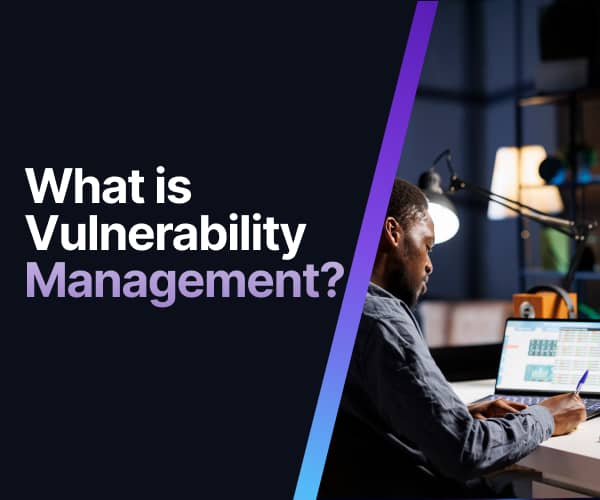
Ultimate IT Risk Management Guide 2024: Best Practices, Strategies, and Tools
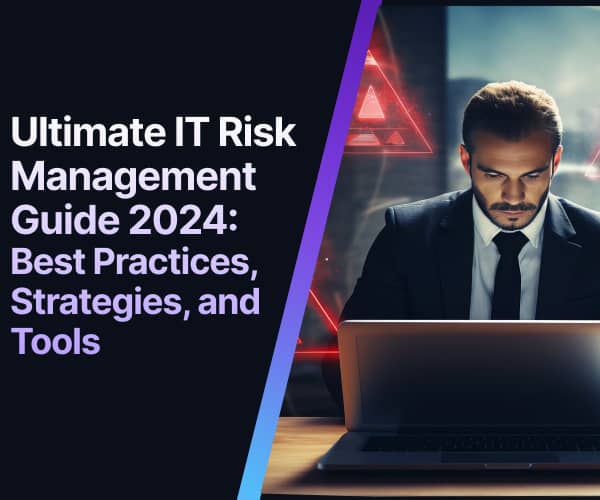
Best Practices for IT Infrastructure Management in 2024

What is Windows Patch Management? Features, Challenges, and Best Practices in 2024
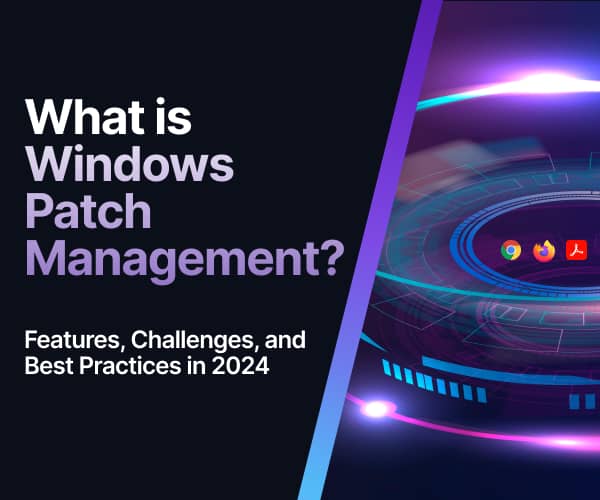
What are the Cybersecurity Risks Associated with Outdated Software and Operating Systems?





